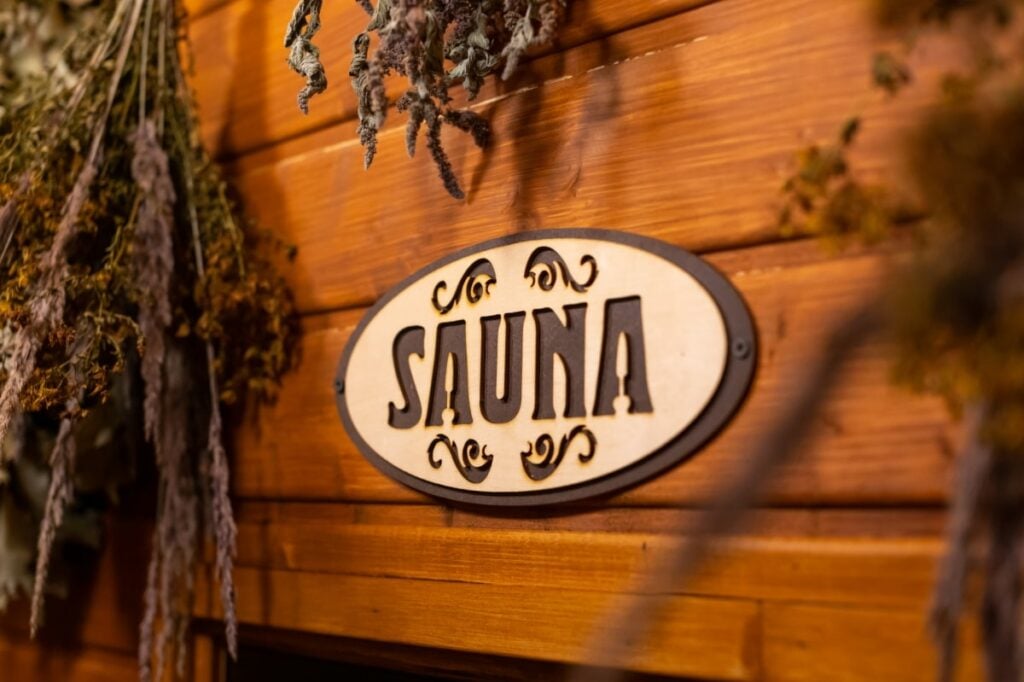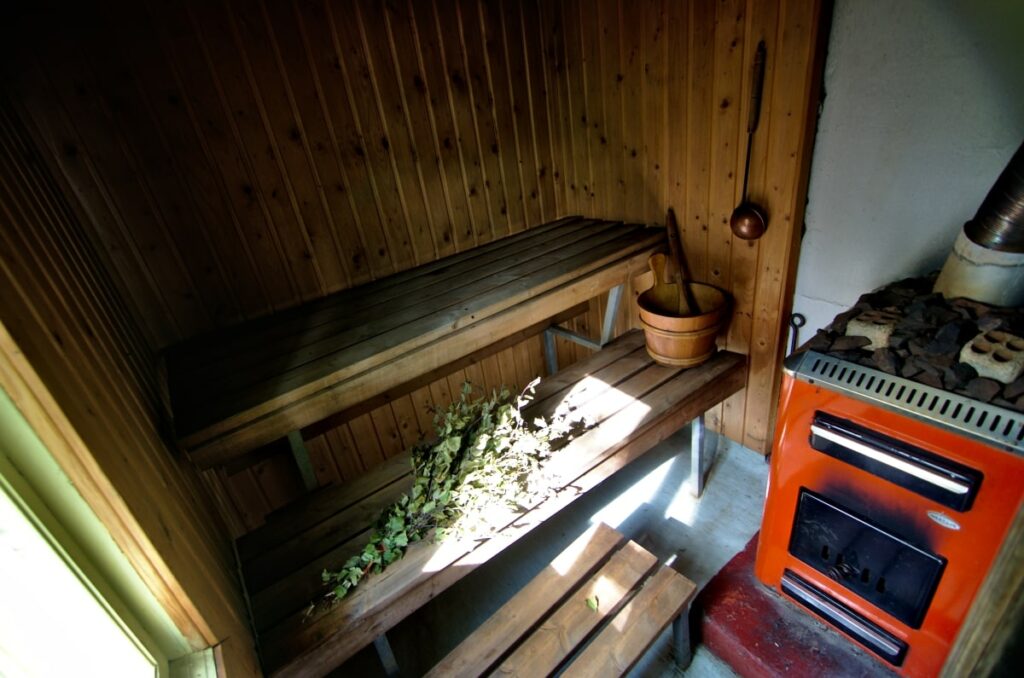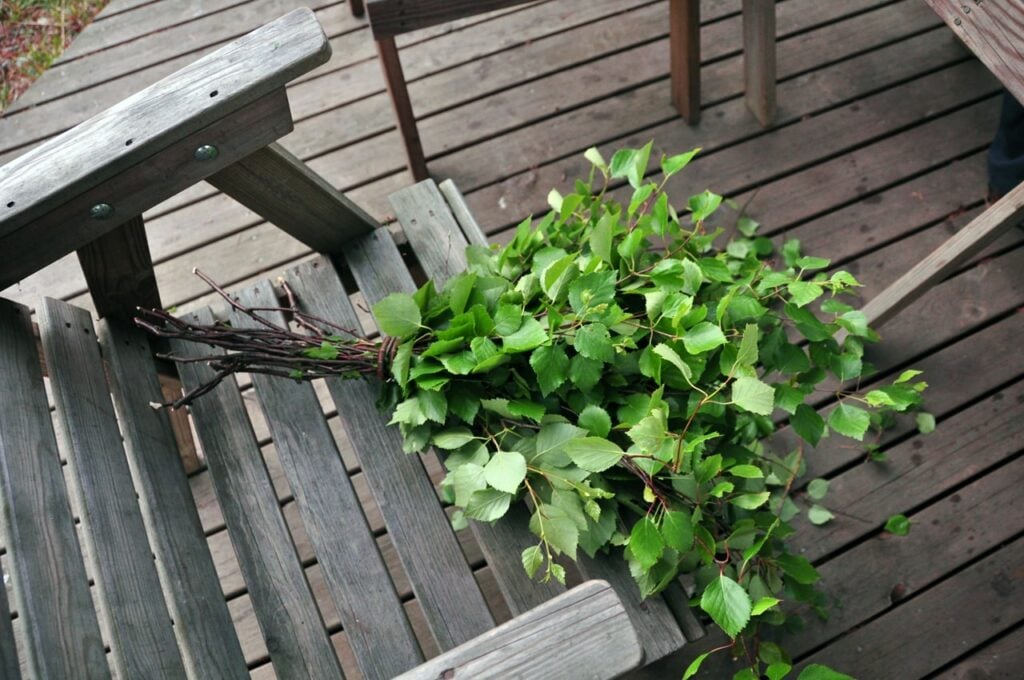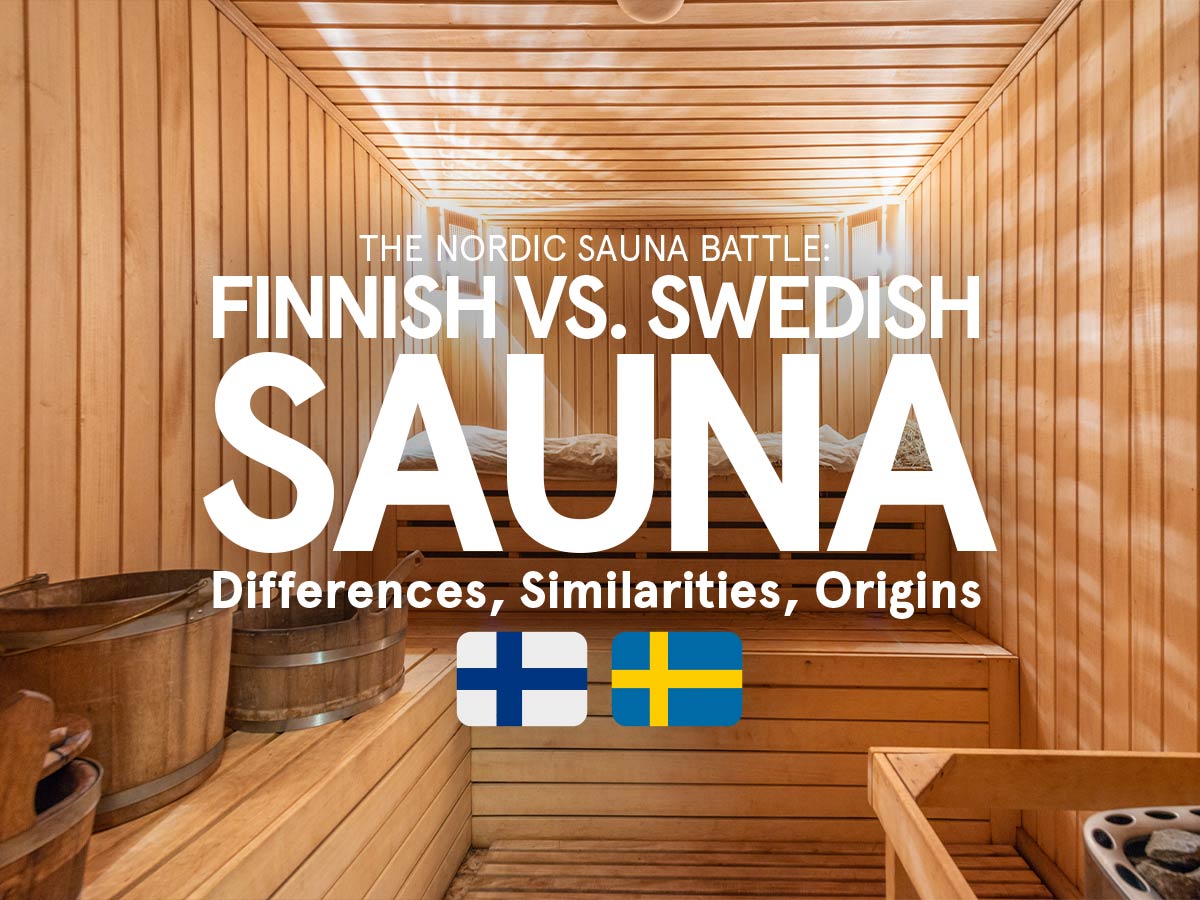My mother grew up in Finland before she moved to Sweden in her teens, so in our home we had a family sauna session most weeks when I was growing up, introducing me to this uniquely Nordic way to press pause on your day, relax, meditate, and deep-clean every pore of your body.
It didn’t take long for me to realize that there were some differences with the way we sauna (“the Finnish way”) and how Swede’s in general preferred it (“the Swedish way”).
In an effort to explain how sauna here in Sweden differs from how it’s done in Finland, I sat down with my Finnish mother and uncle and asked them about the biggest differences (and similarities) between sauna in Finland (the original) compared to Sweden (the copycat neighbor).
So what’s the difference between Finnish and Swedish sauna?
Finnish sauna culture is wet, steamy, sometimes smokey, an important part of the national identity (listed on UNESCO:s List of Intangible Cultural Heritage), and engrained in most Finns’ weekly hygienic routines. For Swedes, sauna is generally dry, more of an odd, exotic pleasure, and usually not something you have at home.
Let’s break it down and go into more detail on just how different sauna in Finland vs. Sweden is. Here are the main differences explained:
Saunas Are a Must for Finns; For Swedes It's a Bonus
Finns cannot imagine not having a Sauna in their home, whereas Swedes see it more as a bonus and luxury. This is illustrated by there being approximately 3.3 million saunas in Finland (a country of 5.5 million inhabitants) and only approximately 300 000 in Sweden (a country of 10 million inhabitants).

You’ll even find saunas built into Finnish apartments, and the Finns are notorious for implementing sauna in their international diplomacy efforts as well, regularly inviting representatives from other countries to enjoy a hot and steamy sauna.
Finnish Saunas Are Wet; Swedish Saunas Are Dry
The difference in humidity in Swedish and Finnish saunas represents the general divide between western and eastern sauna culture.
Western and Central European saunas have traditionally been heated up in a dry manner, almost always serving a main purpose of drying or smoking the household’s meat, malt, and other food.
Eastern Saunas have instead had a primary function as steam baths, where one threw water on hot rocks in a small room to create a hot and cleansing steam that was used to clean every pore of ones body.
Finns Do Weekly Saunas; Swedes Do It Occasionally
Finns have a weekly sauna routine (usually twice per week on Wednesdays and Saturdays), while Swedes (even those who have saunas at home) only do it from time to time when they want to relax and treat themselves to something special.
And it’s not hard to see why when you look at the history of sauna in Finland, with the first saunas (or rather dirt pits with hot rocks) dating back to 1500–900 BCE, and numerous mentions of the importance of Finnish sauna throughout history ever since.

Sauna is a huge part of the Finnish lifestyle and heritage, and has been for thousands of years. With this much pride and history attached to the ritual, it’s no wonder that it’s such an important part of every Finns daily life.
Finnish Sauna Is a Family Activity; Swedes Do It With Friends
Sauna in Finland is a time for families to spend some quality time together (as well as get clean, of course), while Swedes generally do it after other activities, such as swimming and working out — as a way to relax and treat yourself.
As a firsthand example, whenever we stayed in Finland over the summer or winter break when I was growing up, it was customary for the whole big family (cousins, uncles, aunts, grandparents — you name it) to squeeze in as many as possible in the sauna, in groups that were generally divided by age and gender.
Back in Sweden, my friends and I never missed the chance to take a sauna after we had been to the local swimming hall (generally equipped with dry saunas in Sweden), but none of my friends saw any sauna action other than that (as opposed to me who had a weekly sauna routine with my family).
Finnish Vihta (Slapping the Skin With Birch Twigs)

I learned early on that for a sauna to be called “Finnish” a very important part was to clean your pores by means of Vihta.
Vihta is a process that starts with gathering up birch twigs (optimally with leaves as big as small coins), tying them tighly together and putting them in cold water, and then proceeding to slap oneself and anyone else interested softly (or not, depending on the mood) all over the body.
This releases anti-bacterial elements from the birch that helps keeping your skin clean as a form of soap(ish).
Sources:
https://ich.unesco.org/en/RL/sauna-culture-in-finland-01596
 How Nordic People Understand & Talk To Each Other (+ Graphs)
How Nordic People Understand & Talk To Each Other (+ Graphs) Is Finland Scandinavian? (The Full Answer)
Is Finland Scandinavian? (The Full Answer) Finnish Heritage: Nordic, Viking, and Baltic Ties Explained
Finnish Heritage: Nordic, Viking, and Baltic Ties Explained Swedes vs. Finns: How They Relate & Compare (Complete Guide)
Swedes vs. Finns: How They Relate & Compare (Complete Guide)


BRAVO BRAVO BRAVO
I have only one minor complaint about this article, and it would be the part about Swedish saunas being dry, that is usually only the bathhouse saunas in my experience, most private saunas tend to be of the more wet variety, though it also depends a lot on who is in charge of the sauna (or “bastu”).
Hi Erik – you definitely have a good point in that it depends on the bastu-owner on whether or not it will be dry or wet – that said, most public saunas in Sweden tend to be on the dry side of the spectrum, and we just don’t have the same massive number of saunas in homes as Finland does (and there, they are almost always wet whether or not they’re at home or in a public space). Thanks for reading!
–Karl